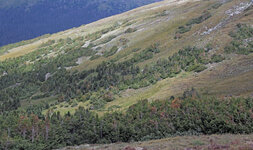guitarpreston
Lil-Rokslider
- Joined
- May 18, 2021
- Messages
- 282
Hypothetical scenario, you glass up a nice buck and get him to bed about a mile and a half away. Planning your approach you have to cross a drainage to get to the other side, the shortest route puts you walking across an open patch where you're visible but still 1.5 miles away, or you could walk the opposite direction a mile or so to be out of sight. Is it worth the extra 2 miles walking or will it bother them to see something that far off? If you'd cross and be exposed, at what distance would you not?

